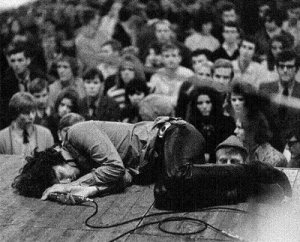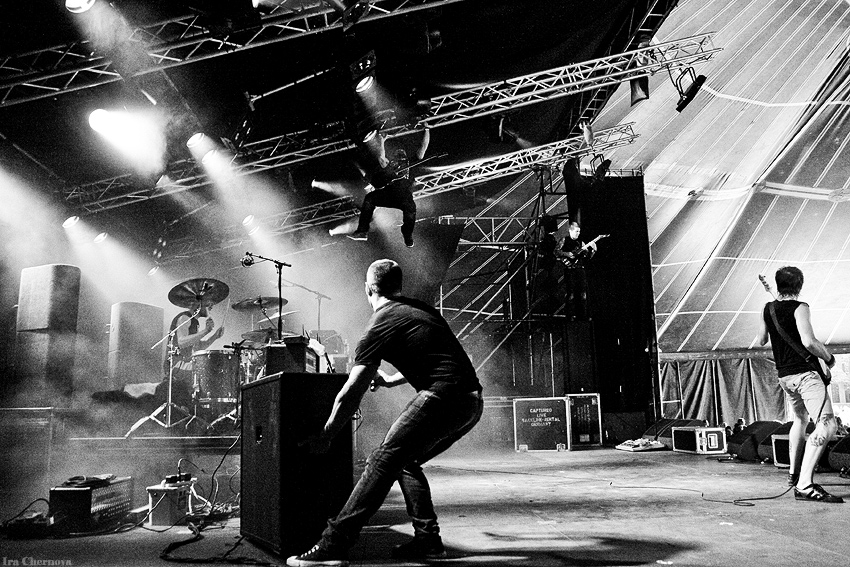Iggy Pop walking on the crowd at a show

Jim Morrison pretends to be dead as The Doors play 'The Unkown Soldier'

The Grateful Dead's defeaning "Wall Of Sound" amplifier setup

And shock tactics have by no means been abondoned by performers nowadays, in fact they have been updated for a modern, desensitised audience. Performers have become more provocative, scary and even violent to attract attention. The Heavy Metal band Slipknot are a prime example as their stage show includes band members actively fighting each other and over the top pyrotechnics. The bands three percussionists are elevated on hydraulic drum risers which shake violently over the audience. Slipknot are well known for this chaotic and terrifying live show and this has contributed to their success which includes several grammy nominations and three platinum albums. Other performers take older shock tactics and change them for a modern audience. For example, Dillinger Escape Plan vocalist Greg Puciato advancing Iggy Pop's stage diving. Iggy Pop would simply run across the stage and jump into the audience while Greg Puciato climbs the lighting rig above the stage and throws himself as much as 30 feet into the crowd. Clearly, shock tactics are an important part of performance. Shock tactics push the boundaries of what is acceptable, always creating new and interesting performance styles which is precisely what music thrives on; forming new and creative styles of music and thus innovative stagecraft is an essential component of music for many performers as it generates interest from an understimulated public who are looking for an exciting live performance.
Dillinger Escape Plan guitarist, Ben Weinman, climbs the lighting rig at a show.

No comments:
Post a Comment